Google Ads has revolutionized the way businesses reach target audiences.
As digital marketing keeps evolving, staying updated with changes in the attribution modelsThe rules or methods used to assign credit for conversions to various marketing touchpoints. is critical for advertisers looking to maximize the performance of their campaigns.
The 2024 updates to Google Ads attribution models are a significant shift, providing better insights and improving decision-making tools for advertisers.
If you want to stay ahead in the competitive landscape, understanding these changes is not just an option; it’s a necessity.
In this article, we’ll delve into the updated attribution models for Google Ads in 2024.
Let’s begin by exploring the changes and their implications for your advertising strategy.
- Understanding the 2024 Changes to Google Ads Attribution Models
- Other Attribution Models in Google Ads: Overview and Use Cases
- Implementing Data-Driven Attribution in Your Campaigns
- How to Adapt Your Marketing Strategy for Google Ads Attribution Model Updates
- Future Trends in Google Ads Attribution Models
- Conclusion: Mastering Attribution Models in Google Ads 2024
- Google Ads Attribution Models FAQs
Understanding the 2024 Changes to Google Ads Attribution Models
Google Ads attribution models play a pivotal role in helping advertisers determine how different touchpoints contribute to a conversion.
In 2024, Google launched updates that placed a heightened emphasis on simplification and the accuracy of attribution reporting.
These updates also continue the trend toward data-driven, machine-learning-based solutions that respect user privacy while providing actionable insights for end-users.
So, what motivated Google to make these changes, and how will this update affect your campaigns?
Let’s explore this in detail:

A creative depiction of attribution models highlighting digital touchpoints and conversion paths in Google Ads.
Overview of Attribution Models in Google Ads
Attribution models in Google Ads determine how credit for conversions is assigned to various touchpoints in the customer journey.
Whether it’s the first interaction, the last click, or a combination of touchpoints, attribution models guide advertisers in optimizing their marketing strategies.
- Last-Click Attribution: Assigns all credit to the final interaction before the conversion.
- Data-Driven Attribution: Uses machine learning to analyze the role of each touchpoint in the conversion process.
- Position-Based Attribution: Gives 40% of credit to both the first and last interaction, and 20% to the middle touchpoints.
With the 2024 update, Google Ads now focuses primarily on Data-Driven AttributionAn attribution model in Google Ads that uses machine learning to assign conversion credit based on the influence of each touchpoint. as the default model, phasing out less effective models.

An insightful depiction of the motivations behind the 2024 Google Ads Attribution Model updates.
Reasons Behind the 2024 Attribution Model Updates
There are several key reasons behind these updates:
- User Privacy: With increasing concerns about data privacy, Google aims to enhance transparency and align with global privacy regulations.
- Improved Accuracy: Data-Driven Attribution leverages machine learning to deliver more precise and actionable insights.
- Optimization Simplification: By focusing on a single default model, Google streamlines the attribution process for advertisers.
These updates ensure advertisers have a more reliable framework for assessing campaign performance while respecting user privacy.

Visualizing the advertiser’s journey adapting to the 2024 updates in Google Ads Attribution Models.
Impact of Changes on Advertisers
Advertisers will experience several key benefits and challenges due to these updates:
- Enhanced Insights: Data-driven insights enable better decision-making for campaign optimization.
- Learning Curve: Advertisers familiar with other models may need to adapt to the new system.
- Competitive Edge: Those who adapt quickly can gain a significant advantage in their advertising efforts.
Understanding and implementing these changes will position you to make the most of Google Ads in 2024 and beyond.
Specific models and strategies for adaptation to this new landscape are discussed in further detail in the sections that follow.
The 2024 changes to Google Ads attribution models emphasize data-driven solutions for better accuracy and privacy compliance. Mastering these updates is crucial for optimizing campaign strategies.
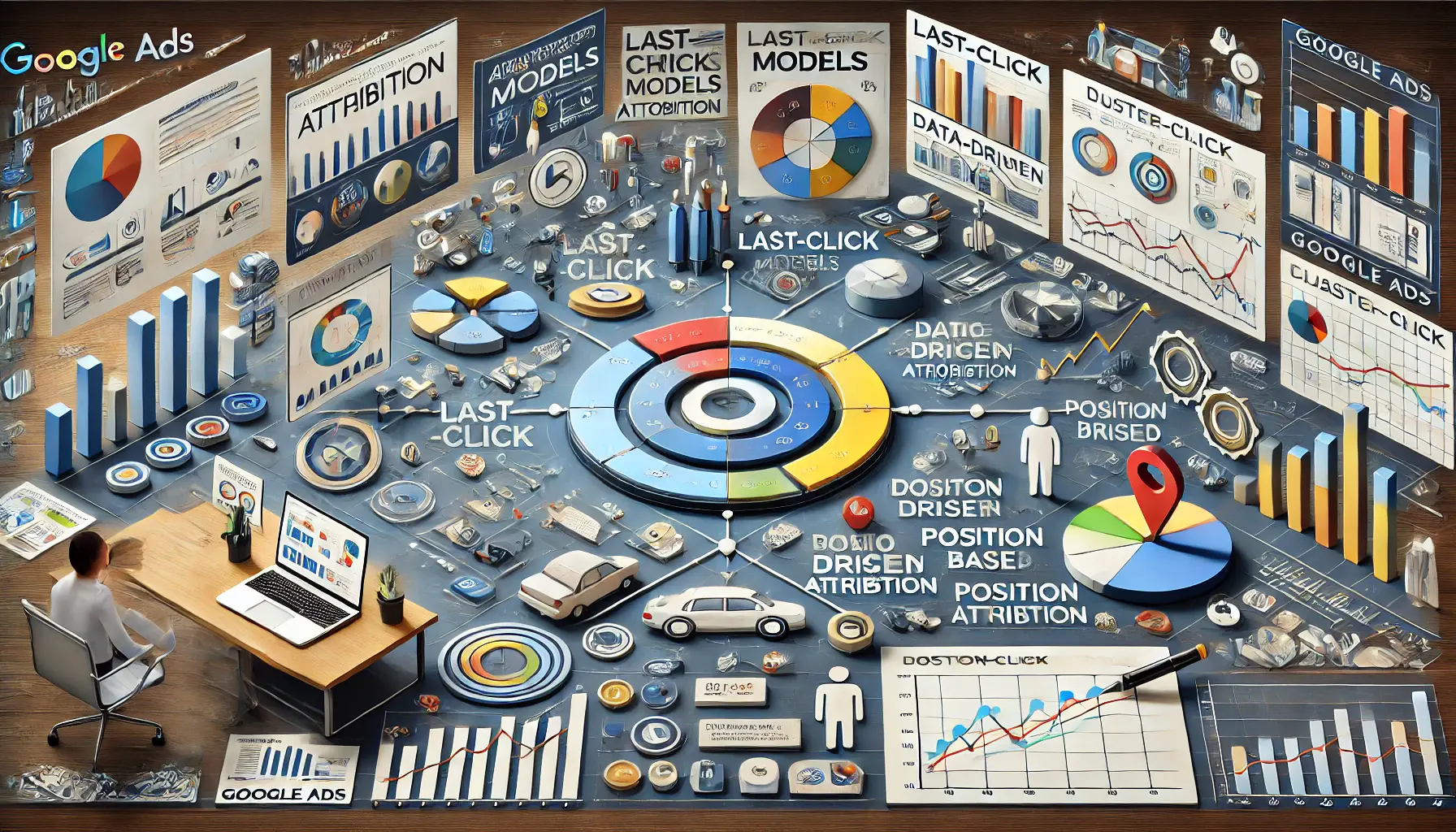
An analytical representation of Google Ads attribution models and their use cases.
Other Attribution Models in Google Ads: Overview and Use Cases
The year 2024 saw Google Ads streamline its attribution models to just two main options: Data-Driven Attribution and Last-Click Attribution.
This change was implemented to enhance clarity and efficiency in the measurement of ad performance.
Let’s delve into these models to understand their functionalities and implications for your advertising strategies.
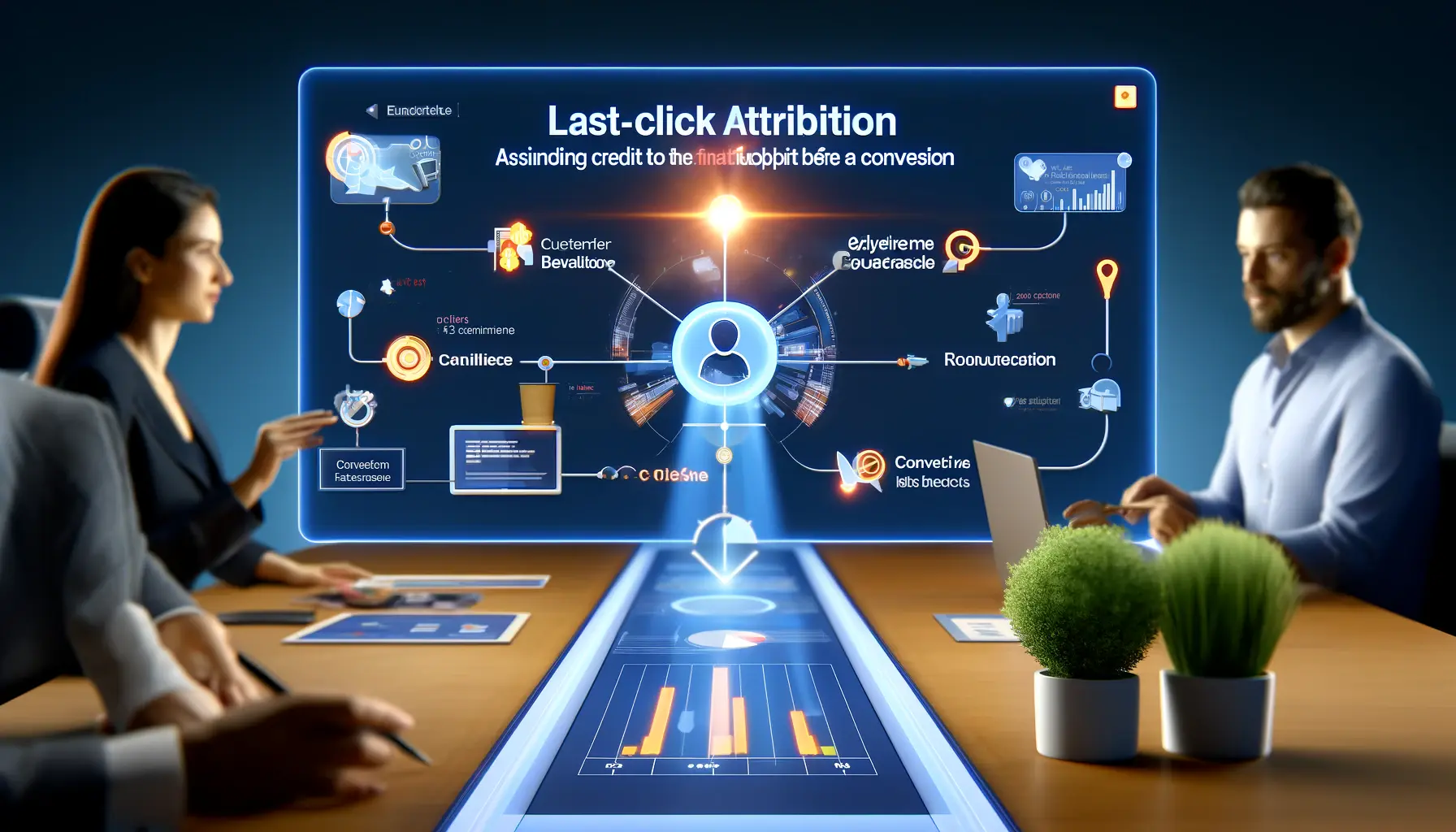
Illustrating the focus on the final touchpoint in Last-Click Attribution within Google Ads.
Detailed Explanation of Last-Click Attribution
Last-Click Attribution assigns full credit for a conversion to the final ad interaction that a user engages with before completing a desired action, such as a purchase or sign-up.
This model assumes that the last touchpoint is the most influential in driving conversions.
While Last-Click Attribution is simple and easy to implement, it has some significant flaws, including the following:
- Oversimplification: It focuses solely on the last interaction the user had with the ad and disregards the cumulative effect of previous touchpoints, which may have played a large role in guiding the user to convert.
- Potential Misallocation of Resources: Utilizing this model in isolation could lead to an inaccurate view of campaign performance, resulting in suboptimal budget allocation and strategy development.
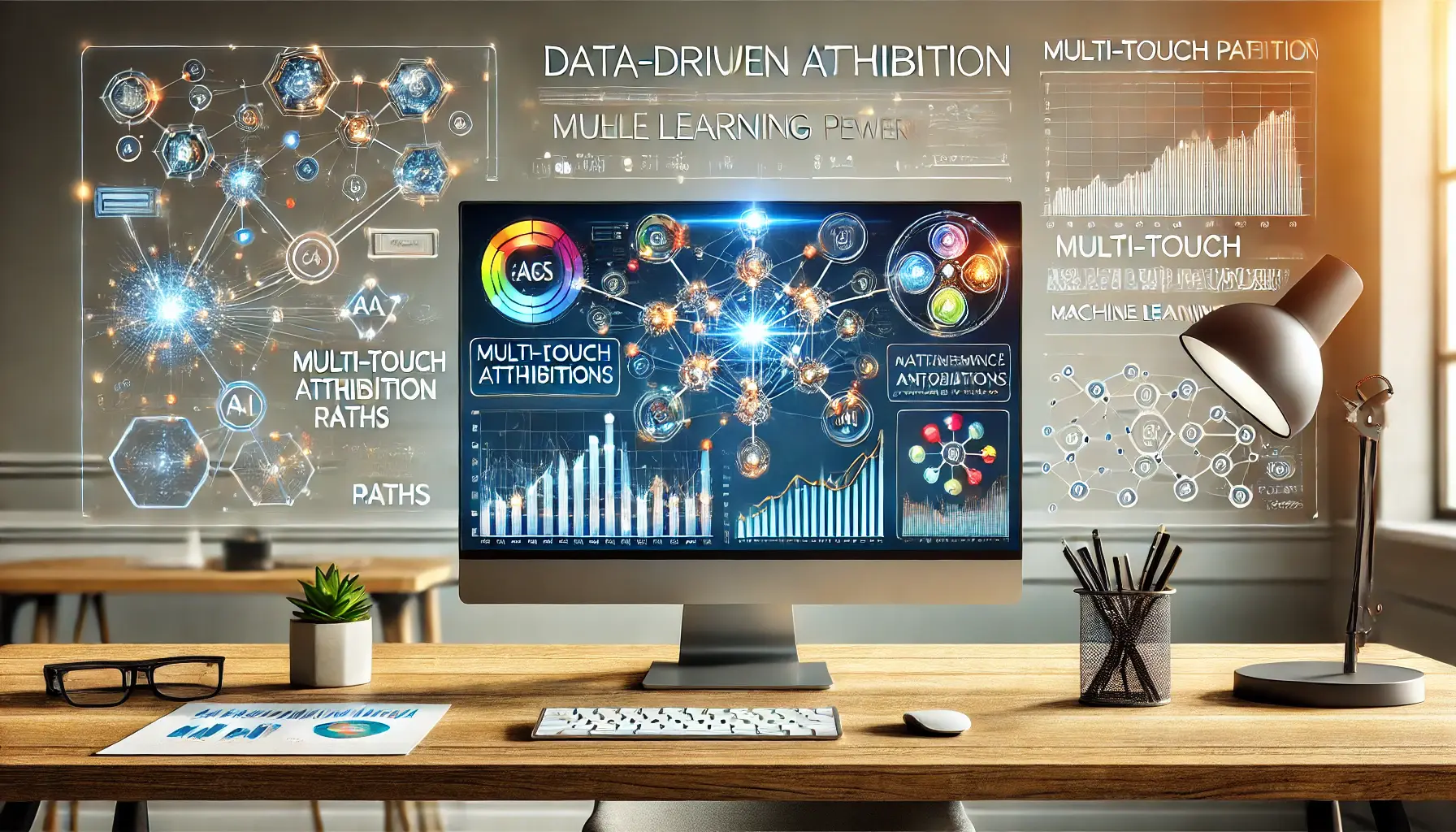
Visualizing the AI-powered insights of Data-Driven Attribution in digital advertising.
Introduction to Data-Driven Attribution
Data-Driven Attribution (DDA) uses advanced machine learningA type of artificial intelligence that enables systems to learn and improve from experience without being explicitly programmed. algorithms to measure the value of each ad interaction along the customer journey.
Unlike rule-based models, DDA analyzes various signals—including ad format, timing, and user engagement—to assign proportional credit to multiple touchpoints leading to a conversion.
Key advantages of Data-Driven Attribution include:
- Comprehensive Analysis: DDA provides a holistic view of the customer journey by considering all interactions, offering deeper insights into user behavior and campaign effectiveness.
- Enhanced Optimization: By accurately identifying the value of each touchpoint, advertisers can make informed decisions to optimize bids, creatives, and overall marketing strategies.
- Alignment with User Privacy: DDA aligns with evolving privacy standards by utilizing aggregated and anonymized data, ensuring compliance with regulations and maintaining user trust.
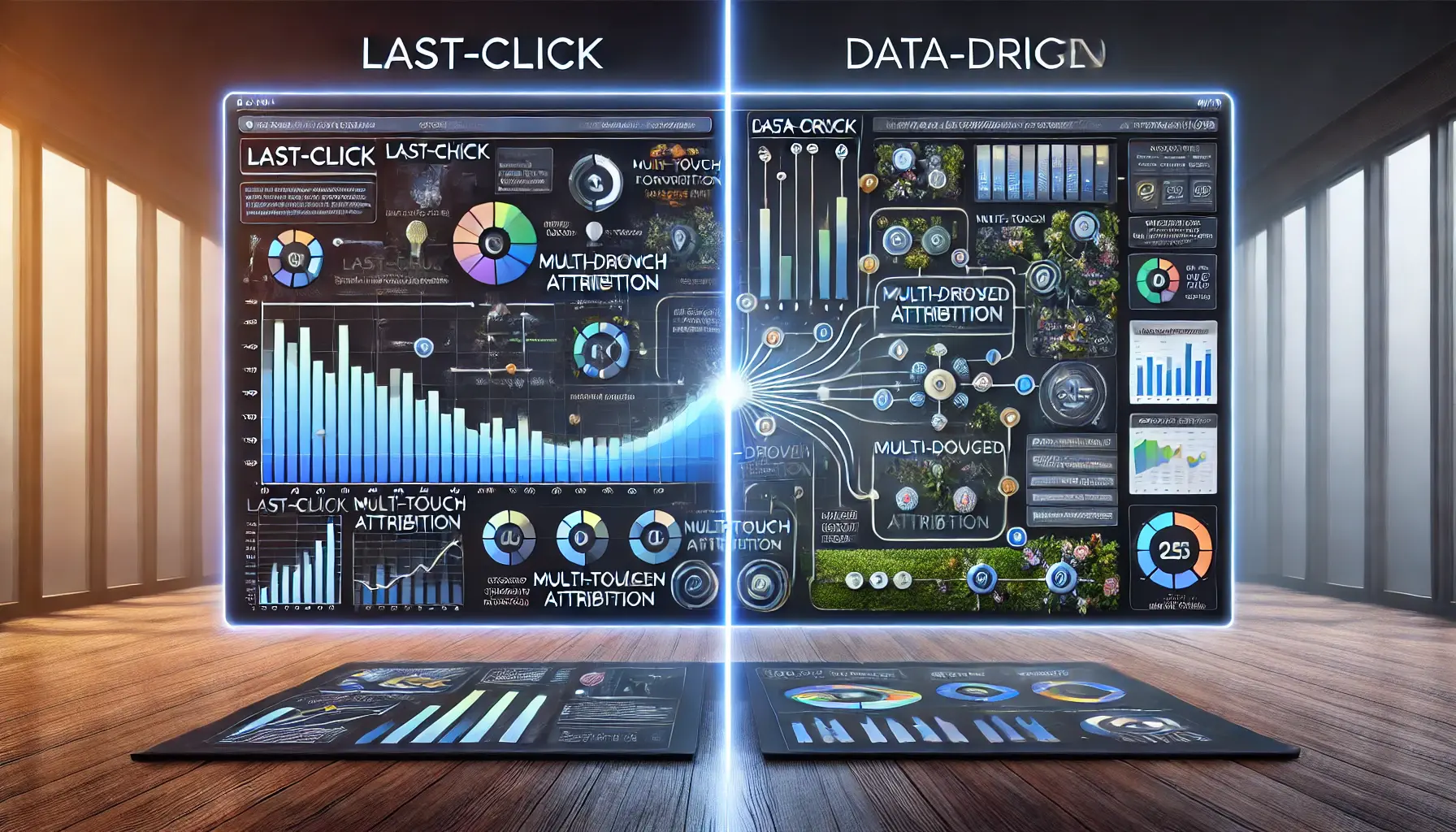
A side-by-side comparison of Last-Click and Data-Driven Attribution models in Google Ads.
Comparing Last-Click and Data-Driven Models
When choosing between Last-Click and Data-Driven Attribution models, consider the following factors:
- Data Availability: DDA requires a substantial amount of data to function effectively. If your campaigns generate limited interactions, Last-Click Attribution may be more practical. For accounts where ad interactions fall below certain thresholds, Google Ads automatically switches to Last-Click Attribution. Specifically, this occurs if ad interactions fall below 2,000 or conversions fall below 200 in a 30-day period. Ensure your campaigns consistently meet these data requirements to maintain the effectiveness of the model.
- Campaign Complexity: For campaigns involving many channels and touchpoints, DDA provides a detailed analysis, capturing the complex paths taken by users to convert.
- Resource Allocation: DDA may require additional resources in terms of data analysis and interpretation. Assess your team’s ability to manage and act upon the insights provided by this model.
Conclusion: Last-Click Attribution is easier to understand and more straightforward, but it might miss the complete range of user interactions responsible for driving conversions.
With Data-Driven Attribution, advertisers gain a more exhaustive and accurate view of how customers interact with their brand, enabling them to optimize their campaign strategies effectively.
Evaluating your specific campaign needs and data availability will guide you in choosing the most appropriate attribution model for your objectives.
While Data-Driven Attribution is now the default, understanding Last-Click Attribution’s limitations and use cases remains essential for accurate campaign evaluation.

Visualizing the strategic implementation of Data-Driven Attribution in Google Ads campaigns.
Implementing Data-Driven Attribution in Your Campaigns
Transitioning to Data-Driven Attribution (DDA) in your Google Ads campaigns can be a game-changer for better understanding the customer journey and improving your marketing strategies.
Here’s how you can effectively implement DDA:
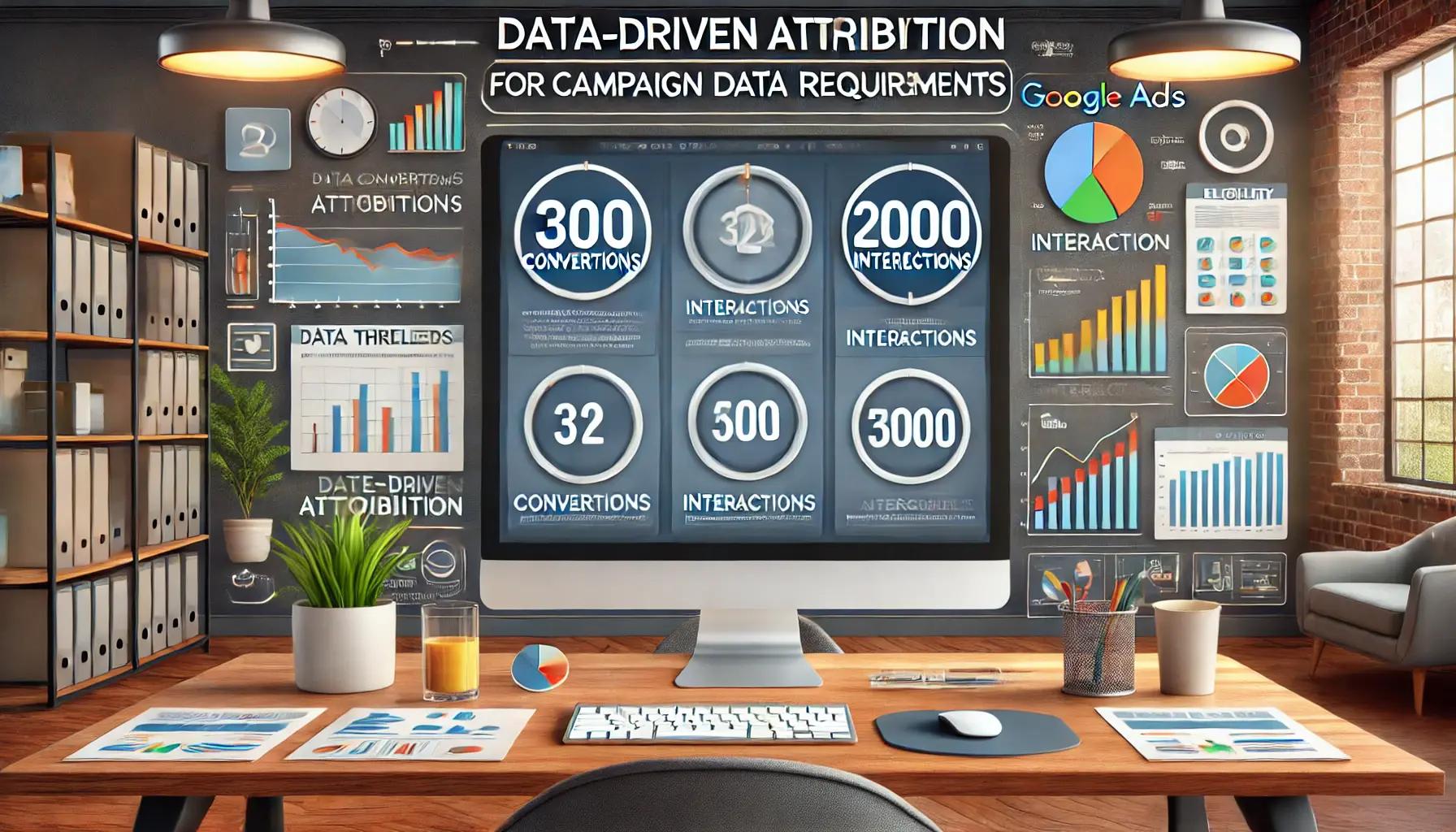
Visualizing the data requirements for eligibility in Data-Driven Attribution for Google Ads campaigns.
Eligibility Criteria for Data-Driven Attribution
Before adopting DDA, ensure your account meets the following criteria:
- Conversion Volume: To use DDA effectively, your account should have at least 300 conversions and 3,000 ad interactions in the last 30 days. This data threshold enables the model to generate accurate insights.
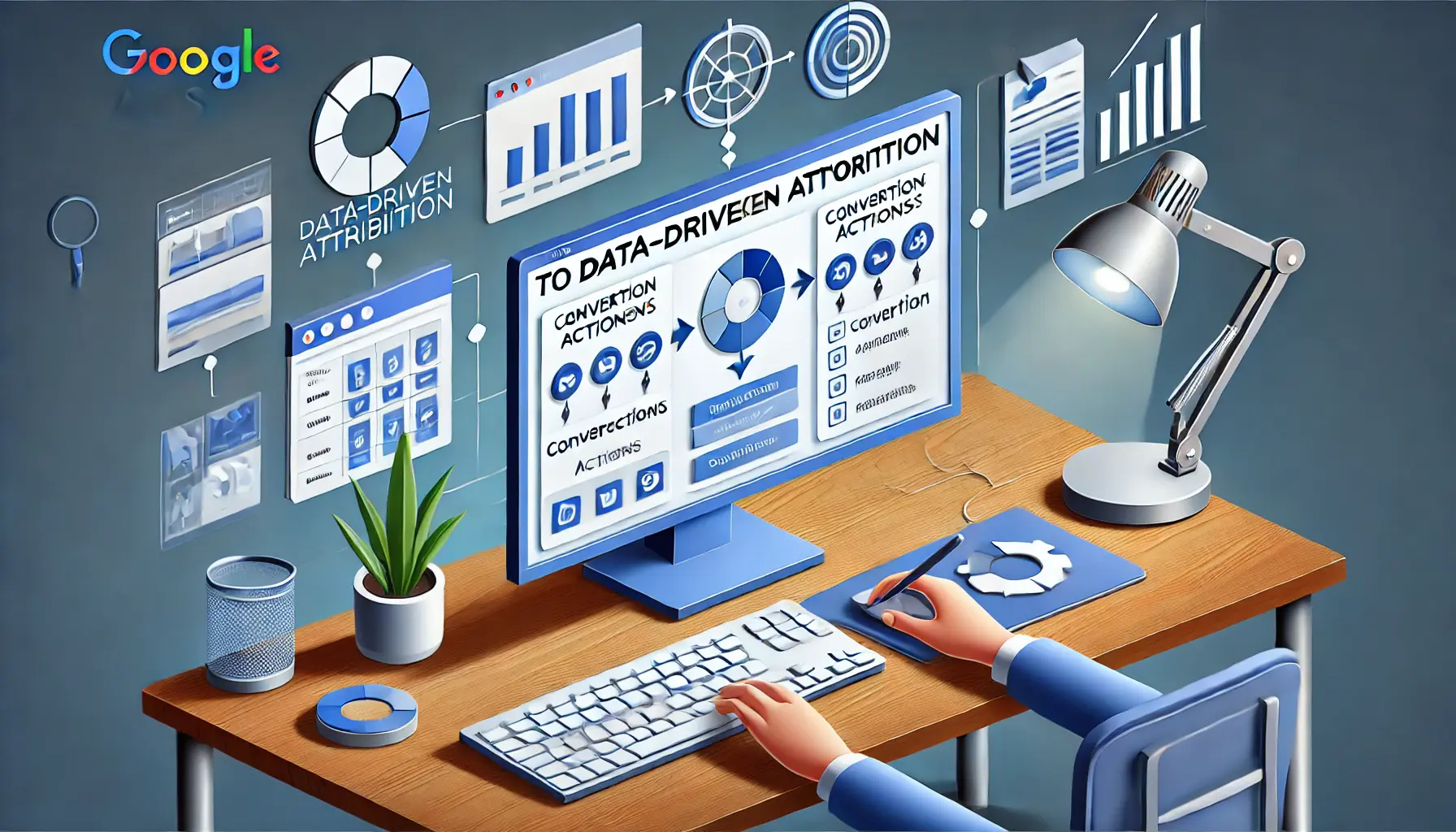
Visualizing the steps for switching to Data-Driven Attribution in Google Ads.
How to Switch to Data-Driven Attribution
Here’s how you can set up DDA for your campaigns:
- Enter Conversion Settings: In your Google Ads account, click the ‘Tools & Settings’ menu, then select ‘Conversions’ under the ‘Measurements’ section.
- Choose Conversion Action: Select the conversion action that you want to edit.
- Edit Attribution Model: In the conversion action settings, look for the ‘Attribution Model’ section and select ‘Data-Driven’ from the options available.
- Save Changes: Confirm and save your new attribution model settings.

Visualizing best practices in using Data-Driven Attribution models for campaign optimization.
Best Practices in Using Data-Driven Models
Get the most out of DDA by following these best practices:
- Track Everything: Make sure that all marketing channels and touchpoints are tracked correctly to feed the model with complete data.
- Analyze Your Data Regularly: Regularly review your performance metrics to identify trends and make informed decisions to adjust your campaigns.
- Use Smart Bidding: Combine DDA with automated bidding strategies to optimize your bids based on the value of each touchpoint. Brands that switch to data-driven attribution from any other model see an average increase of 6% in conversions.
- Continuous Testing: Experiment with different ad creatives, keywords, and targeting options to determine what works best under the DDA model.
Data-Driven Attribution requires careful planning and execution, but the enhanced insights and optimization opportunities it offers can lead to more effective and efficient advertising campaigns.
Transitioning to Data-Driven Attribution requires meeting eligibility criteria and utilizing best practices such as tracking all touchpoints and combining DDA with Smart Bidding for optimal results.
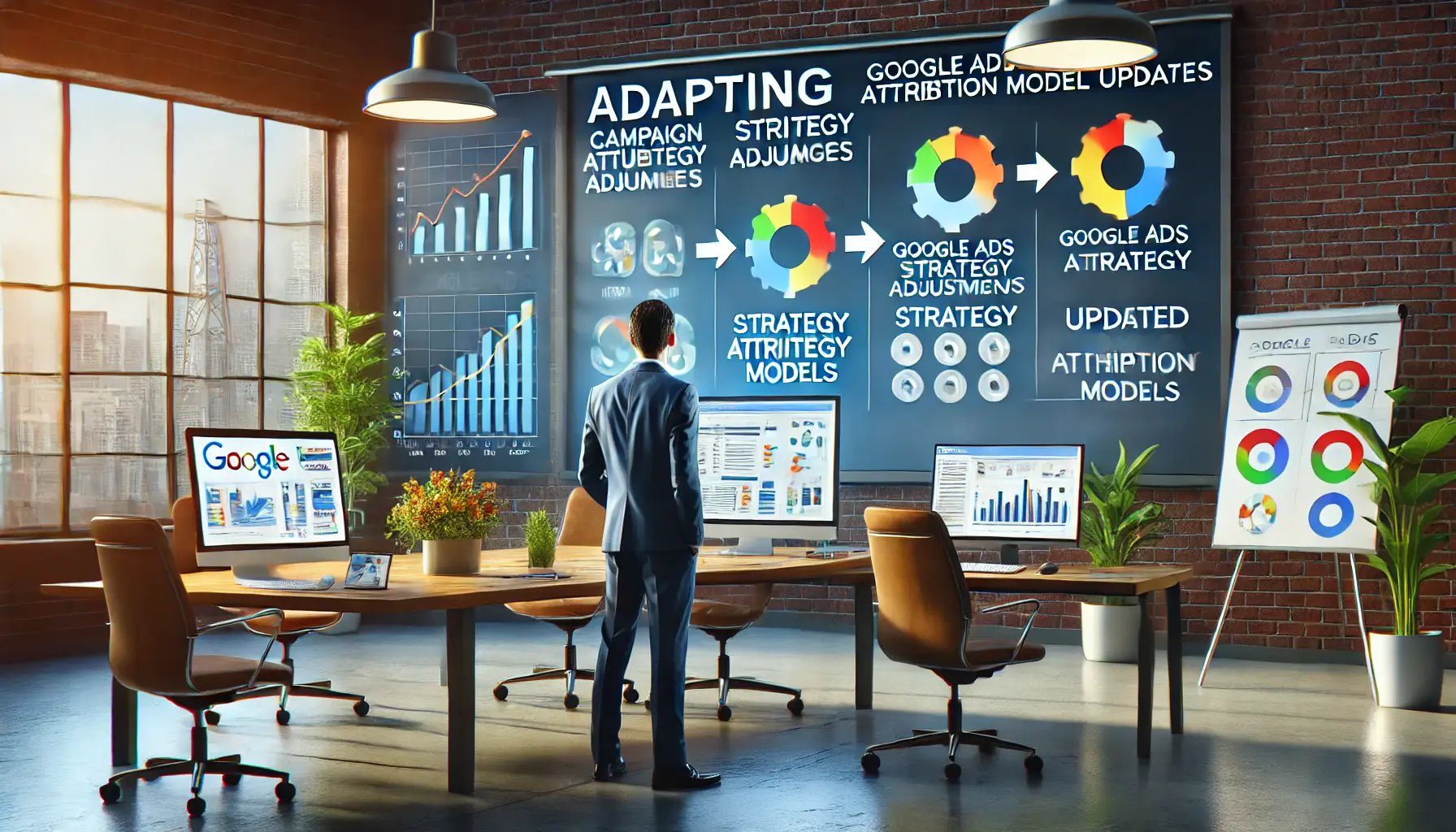
Visualizing the adaptation of marketing strategies to the updated Google Ads Attribution models.
How to Adapt Your Marketing Strategy for Google Ads Attribution Model Updates
The updates to Google Ads’ attribution models in 2024 require a strategic rethink in how advertisers conceptualize their marketing efforts.
Below are some strategies to help maintain and improve your campaign performance:
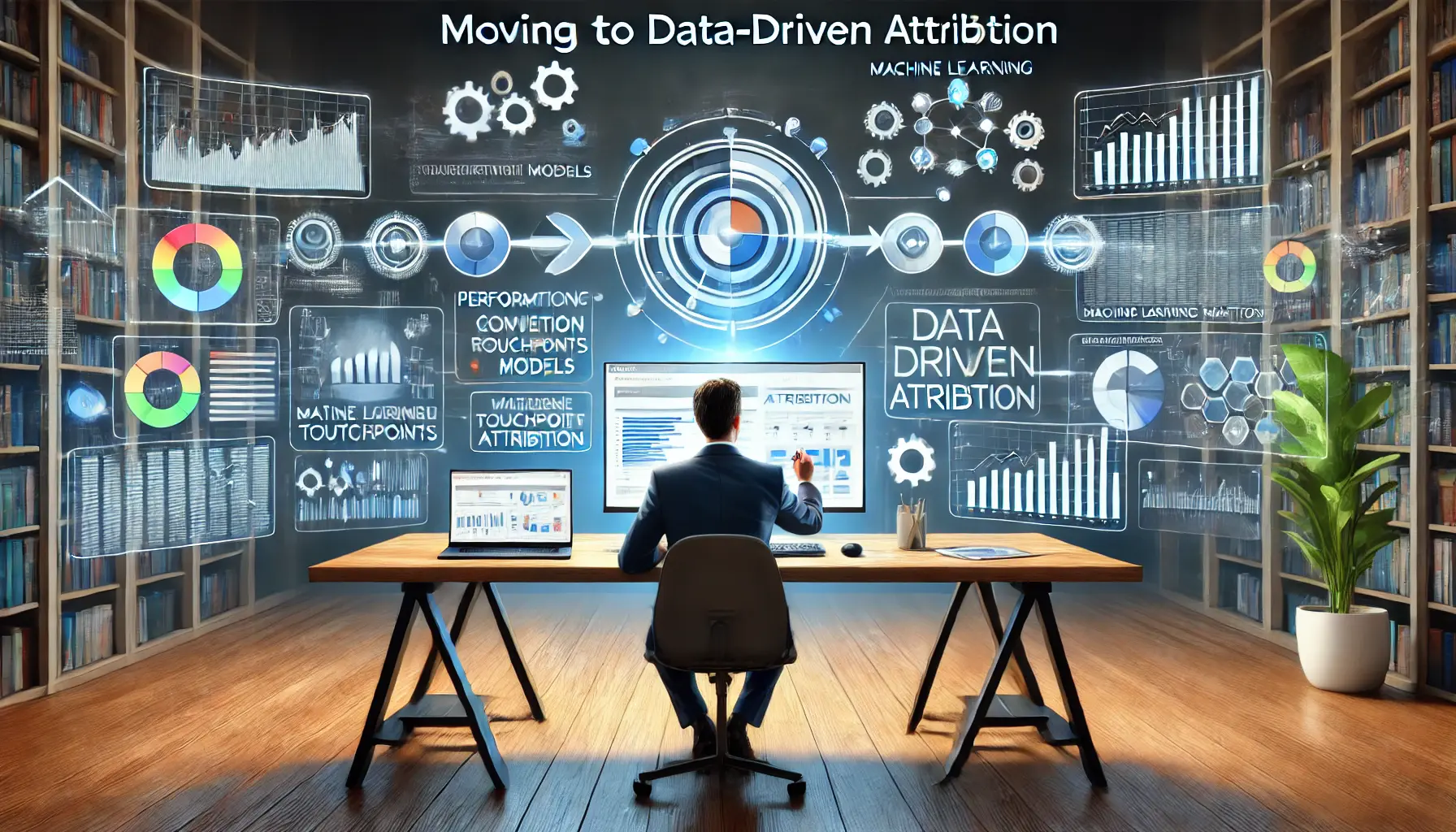
Visualizing the transition to Data-Driven Attribution in Google Ads campaigns.
1. Move to Data-Driven Attribution
With Google Ads making Data-Driven Attribution (DDA) the default model, adapting to this change is essential.
DDA utilizes machine learning to assess the contribution of each touchpoint in the customer journey, providing a more accurate representation of your marketing efforts’ effectiveness.
- Action Step: Transition your campaigns to DDA to gain deeper insights into user interactions and optimize your marketing strategies accordingly.

Visualizing the process of investing in first-party data collection for digital marketing.
2. Invest in First-Party Data Collection
As third-party cookies become less reliable, focusing on first-party dataData collected directly from users by a business, such as website activity or customer interactions.—information you collect directly from your audience—is crucial.
This data is invaluable for personalized marketing and effective audience targeting.
- Action Step: Implement strategies to collect first-party data, such as engaging website visitors, encouraging newsletter sign-ups, and utilizing customer feedback forms.

Visualizing the use of AI-powered tools for optimizing Google Ads campaigns.
3. Leverage AI-Powered Campaigns
Google Ads is increasingly integrating artificial intelligence to enhance campaign performance.
Utilizing AI-driven features can help you automate and optimize various aspects of your advertising efforts.
- Action Step: Explore AI-powered campaign types like Performance Max, which uses machine learning to optimize bids and placements across Google’s channels.

Visualizing the use of AI-powered tools for optimizing Google Ads campaigns.
4. Stay Informed on Policy Updates
Google frequently updates its advertising policies, which can impact your campaigns.
Staying informed about these changes ensures compliance and helps you adjust your strategies proactively.
- Action Step: Regularly review Google’s policy updates and adjust your ad content, targeting, and overall campaign strategies to remain compliant.

undefined
5. Continuously Test and Optimize
The digital advertising landscape is dynamic.
Regularly testing different ad creatives, keywords, and targeting strategies allows you to identify what works best and adapt to changing trends.
- Action Step: Set up A/B testing for your ads and measure performance metrics to make data-informed decisions for optimization.
By incorporating these strategies, you can adapt your marketing approach to align with the latest changes in Google Ads attribution models and maintain ongoing success in your advertising efforts.
Adapting to these updates involves integrating Data-Driven Attribution, leveraging AI-driven campaigns, and focusing on first-party data collection to stay competitive.

Visualizing the future trends and advancements in Google Ads Attribution Models.
Future Trends in Google Ads Attribution Models
Digital marketing is an ever-evolving segment, and Google Ads attribution models will also witness significant developments.
Learning about these trends will assist you in adapting your methods effectively.
Below are some of the key trends:

Visualizing the increased usage of AI and ML integrations in digital marketing strategies.
1. Increased Usage of AI and ML Integrations
In the future, the integration of AI and ML into attribution models is expected to advance significantly.
These technologies will enable more accurate analysis of complex customer journeys, providing deeper insights into user behavior and campaign performance.
- Insight: Leveraging AI and ML can help decipher the true impact of marketing efforts across diverse channels, enhancing campaign effectiveness.

Visualizing cross-device and cross-channel attribution in digital marketing.
2. Cross-Device and Cross-Channel Attribution
As consumers continue to engage with brands on multiple devices and across various platforms, the next generation of attribution models will focus on providing a comprehensive view of the customer journey.
This ensures that all touchpoints involved in a campaign are appropriately valued.
- Insight: Understanding cross-channel and cross-device interactions is critical for accurate attribution and effective resource allocation.

Visualizing privacy-centric attribution solutions in digital marketing.
3. Privacy-Centric Attribution Solutions
As privacy regulations become more stringent, attribution models will need to adapt by utilizing privacy-preserving technologies.
This shift will ensure compliance while still providing valuable insights for advertisers.
- Insight: Embracing privacy-centric attribution methods will be essential for maintaining user trust and adhering to regulations.

Visualizing real-time attribution analysis and decision-making in digital marketing.
4. Real-Time Attribution Analysis
The demand for immediate insights will drive the development of real-time attribution models.
These models will allow advertisers to make swift adjustments to their campaigns, optimizing performance on the fly.
- Insight: Real-time analysis enables proactive campaign management, leading to more effective advertising strategies.

Visualizing the simplification of attribution models for clearer, more efficient data analysis.
5. Simplification of Attribution Models
To reduce complexity, there will be a move towards streamlining attribution models.
Google has already started this process by retiring some traditional models in favor of more sophisticated, data-driven approaches.
- Insight: Simplified models make it easier for advertisers to act on attribution data effectively.
By keeping these emerging trends in mind, you can ensure that your marketing strategies remain functional and take full advantage of the ongoing changes in digital advertising.
Future trends like cross-deviceA term describing interactions or conversions occurring across different devices, such as smartphones, tablets, or desktops. attribution, real-time analysis, and AI-driven insights will redefine how advertisers evaluate and optimize campaigns.

Visualizing the mastery of attribution models in Google Ads for 2024.
Conclusion: Mastering Attribution Models in Google Ads 2024
As we advance further into the evolving landscape of digital marketing, understanding and leveraging Google Ads attribution models has become crucial for advertisers aiming to remain competitive.
The 2024 updates present both opportunities and challenges, but with the right strategies, businesses can maximize their campaign effectiveness.
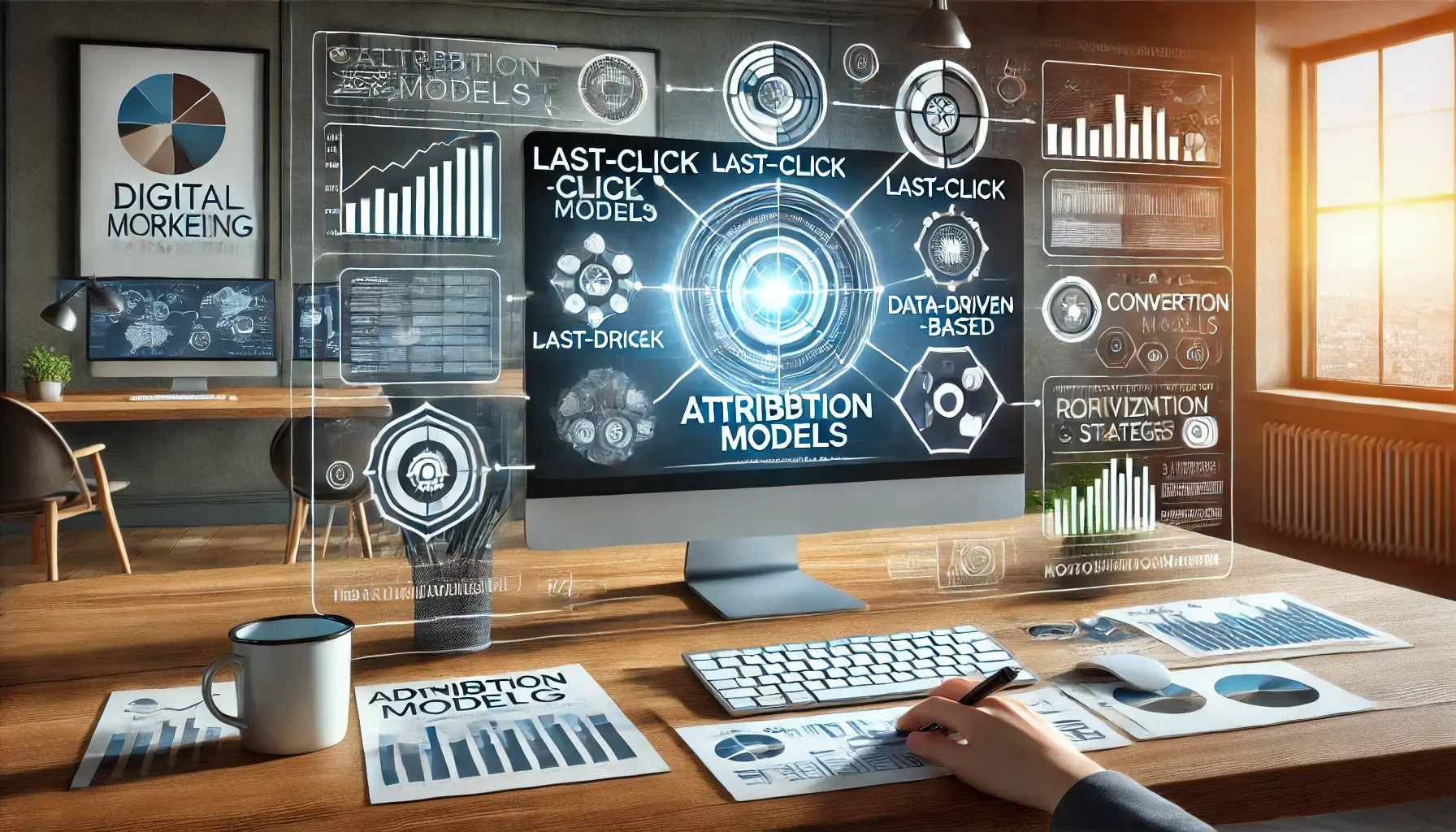
Visualizing the critical role of attribution models in digital marketing decision-making.
The Importance of Attribution Models
Attribution models lie at the core of effective advertising strategies.
These models help marketers analyze the contribution of each touchpoint toward conversions, enabling better resource allocation and improved decision-making.
The shift towards Data-Driven Attribution as the default model underscores Google’s commitment to more accurate, insightful, and privacy-conscious tools.

Visualizing the key takeaways from the 2024 updates to Google Ads attribution models.
Key Takeaways from 2024 Updates
- Streamlined Options: The focus on Data-Driven Attribution simplifies choices for advertisers, ensuring that models are effective yet easy to use.
- Enhanced Insights: Leveraging machine learning enables a deeper understanding of the customer journey, helping advertisers identify high-value interactions.
- Privacy-Centric Approach: Adapting to new regulations ensures compliance while maintaining user trust, making data collection and utilization more ethical.

Visualizing the process of adapting and optimizing marketing strategies for success in digital advertising.
Adapting Strategies for Success
To make the most of these updates, advertisers should prioritize integrating Data-Driven Attribution into their campaigns while investing in first-party data collection and AI-powered tools.
Staying informed about policy updates and continuously testing campaigns are essential practices for long-term success.
Additionally, understanding future trends such as cross-device attribution and real-time analysis can position businesses ahead of the curve, ensuring they remain agile and effective in the face of industry changes.
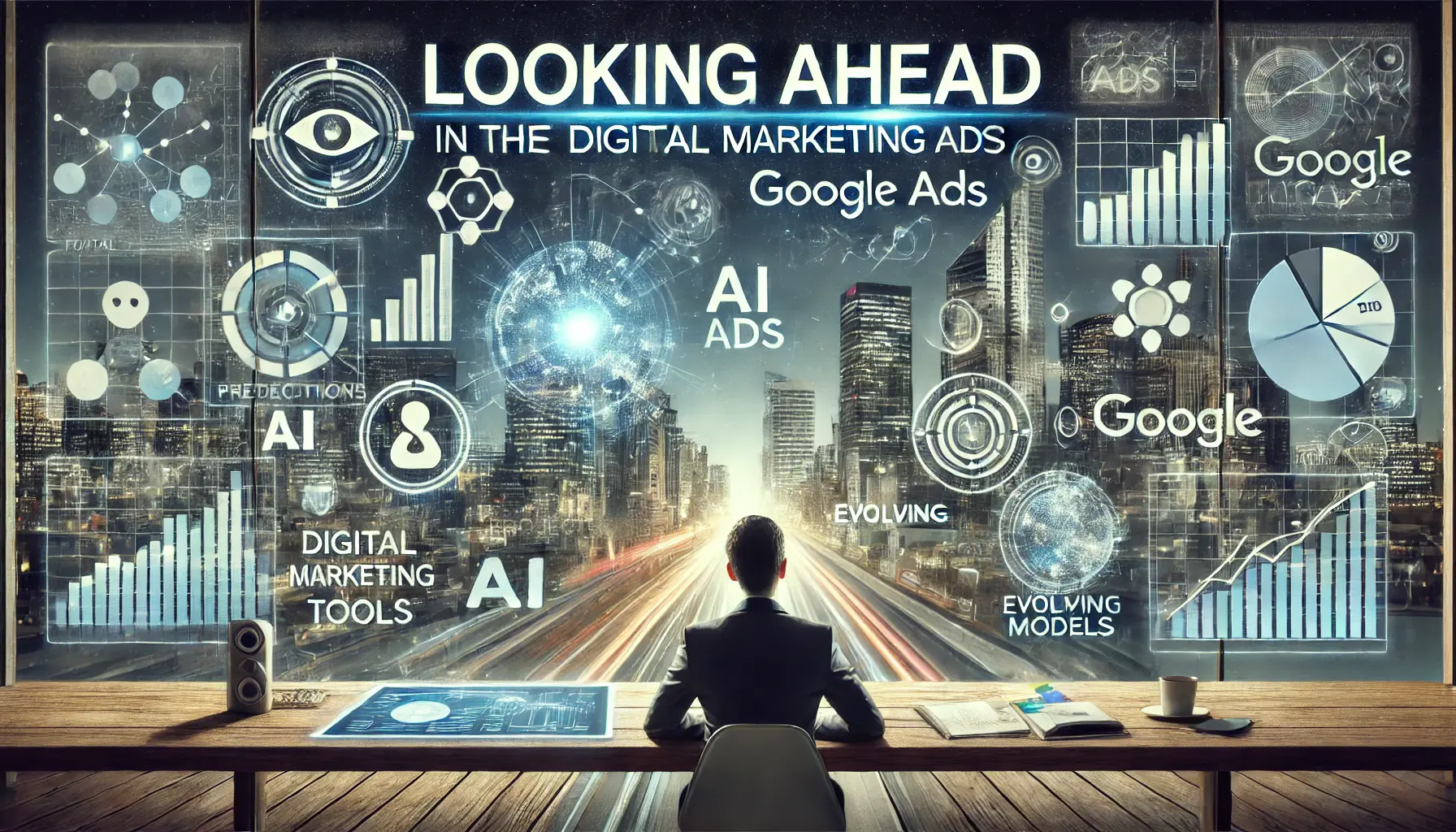
Visualizing the future of digital marketing and Google Ads with a focus on forecasting and advanced technologies.
Looking Ahead
The updates to Google Ads attribution models in 2024 signal a new era of precision and innovation in digital marketing.
Embracing these changes enables advertisers to unlock new opportunities, optimize performance, and build strategies that are sustainable for the future.
Armed with the insights provided in this article, you are well-positioned to master the latest attribution models in Google Ads and achieve measurable success in your campaigns.
The 2024 updates emphasize precision, simplicity, and privacy in attribution. Advertisers should prioritize adapting to these changes to ensure campaign success.
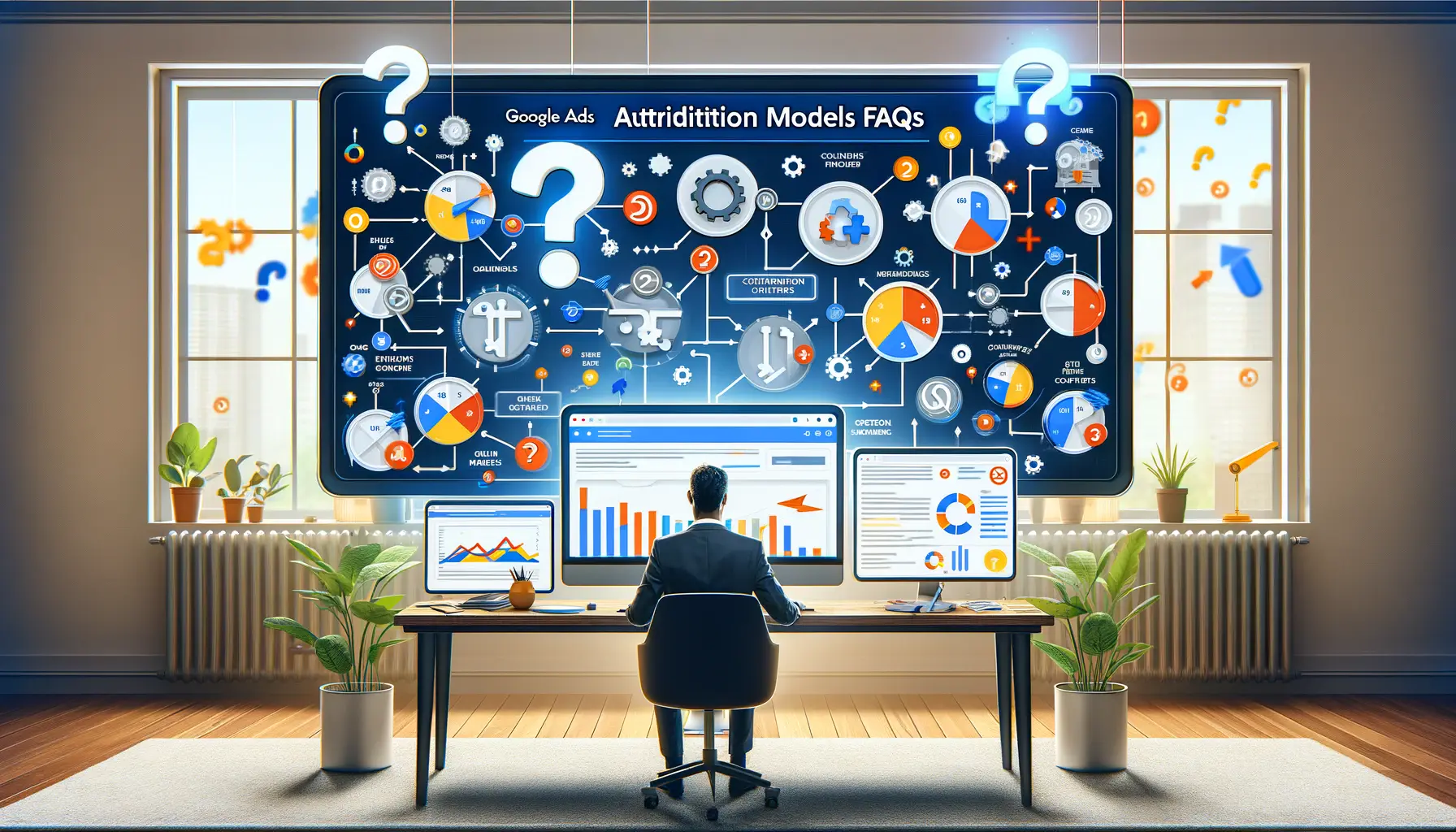
Visualizing the process of answering frequently asked questions about Google Ads Attribution Models.
Your campaigns can be managed by an agency specialized in Google Ads, check out our service page.
Google Ads Attribution Models FAQs
Data-Driven Attribution uses machine learning to distribute conversion credit across touchpoints, giving a more accurate representation of user interactions that lead to conversions.
Google streamlined attribution models to focus on more accurate, AI-driven methods, enhancing measurement precision and simplifying advertiser choices.
In your Google Ads account, navigate to ‘Conversions’ under ‘Tools & Settings,’ select a conversion actionA specific action tracked in Google Ads, such as a purchase or form submission, that indicates success for a campaign., edit its attribution model, and choose ‘Data-Driven.’
Data-Driven Attribution offers enhanced insights into the customer journey, enabling better optimization of marketing strategies and improved campaign performance.
Eligibility for Data-Driven Attribution requires sufficient data; consult Google’s guidelines to determine if your account meets the necessary criteria.
Last-Click Attribution assigns all credit to the final interaction, while Data-Driven Attribution distributes credit across multiple touchpoints based on their influence.
Switching models can impact performance metrics; it’s advisable to monitor campaigns closely after making changes to assess effects.
Attribution models influence how conversions are counted, affecting automated bidding strategies that optimize based on conversion data.
Yes, Google Ads provides tools to compare attribution models, helping you understand how each model affects conversion credit allocation.

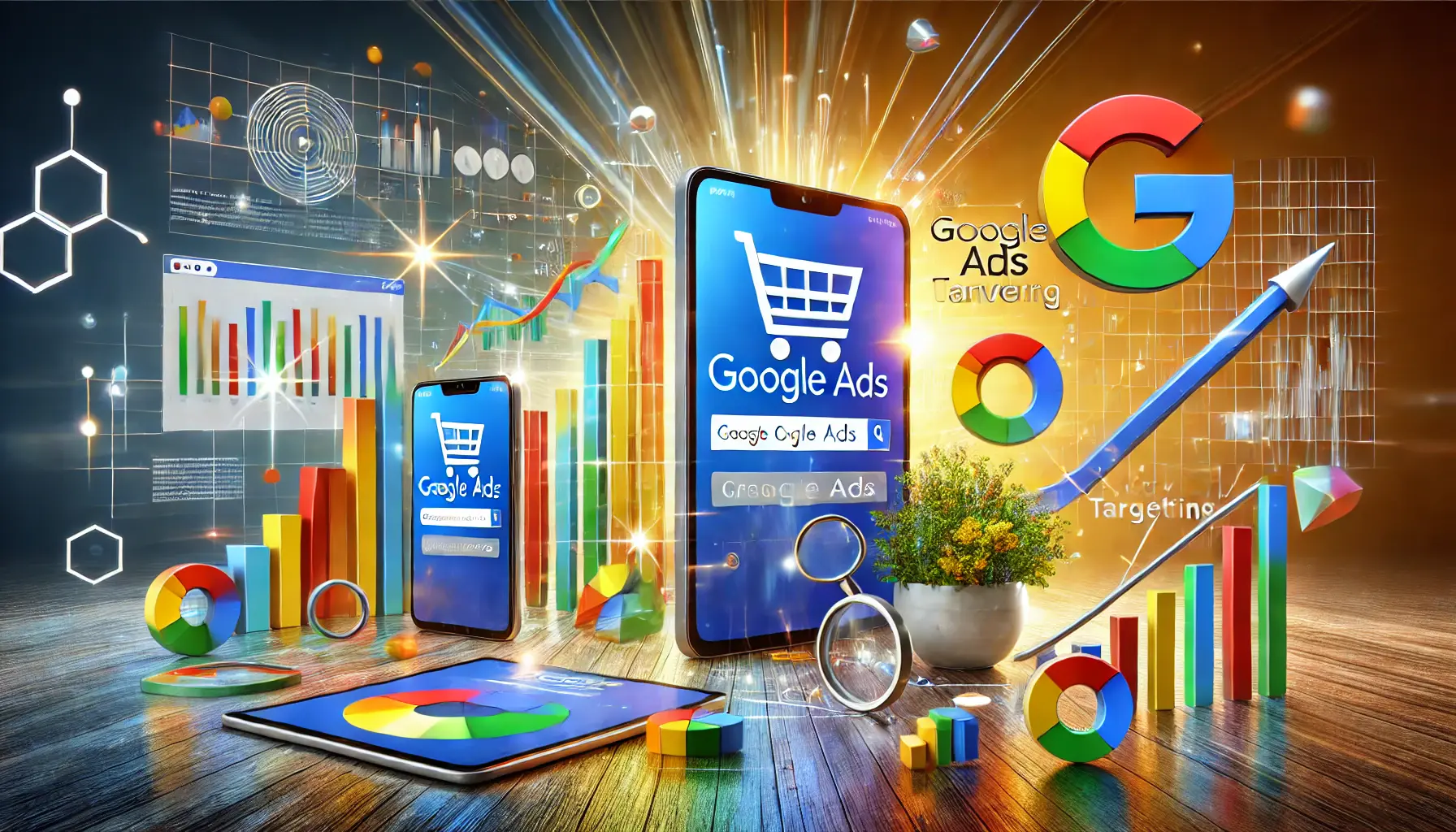





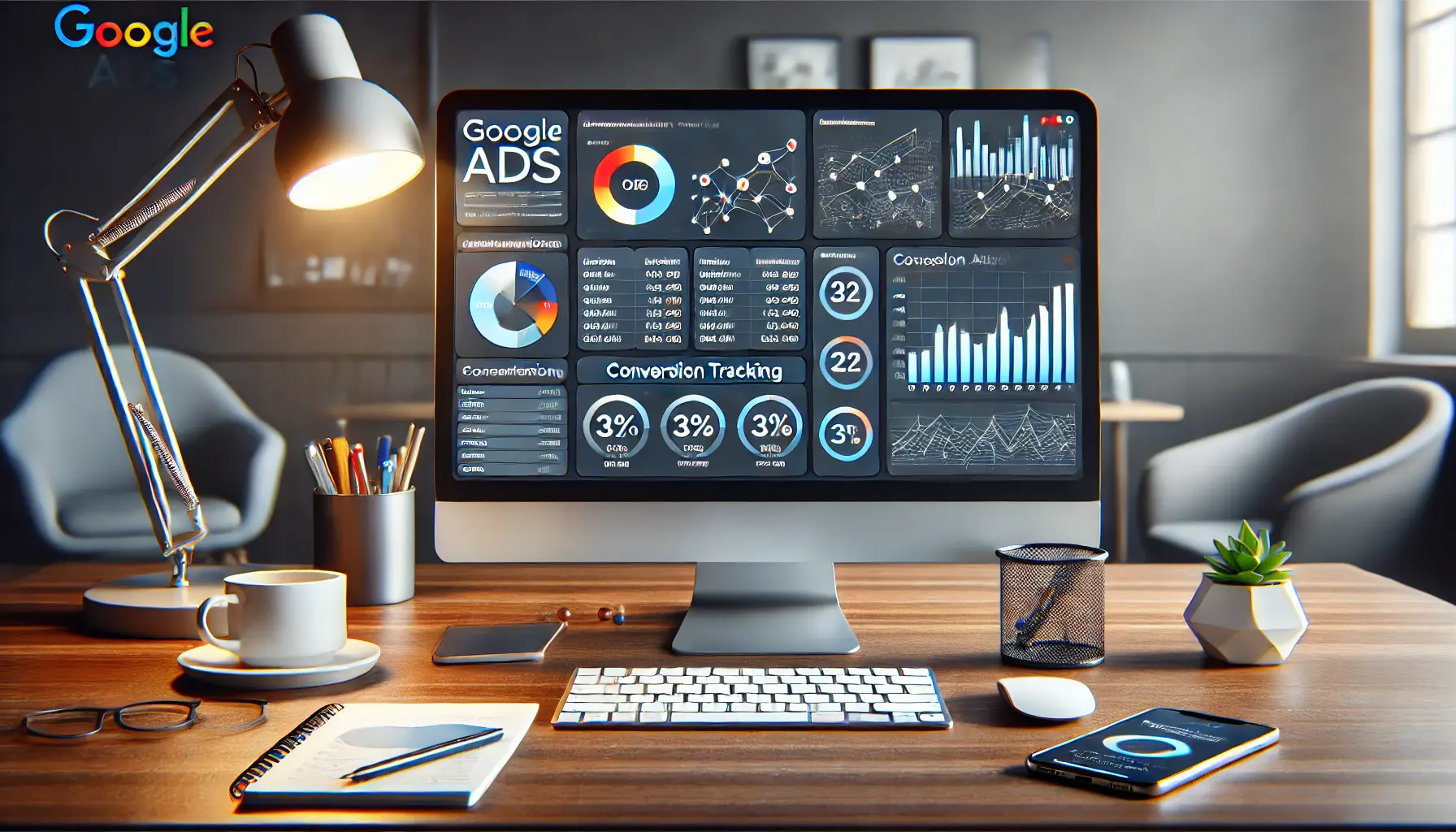
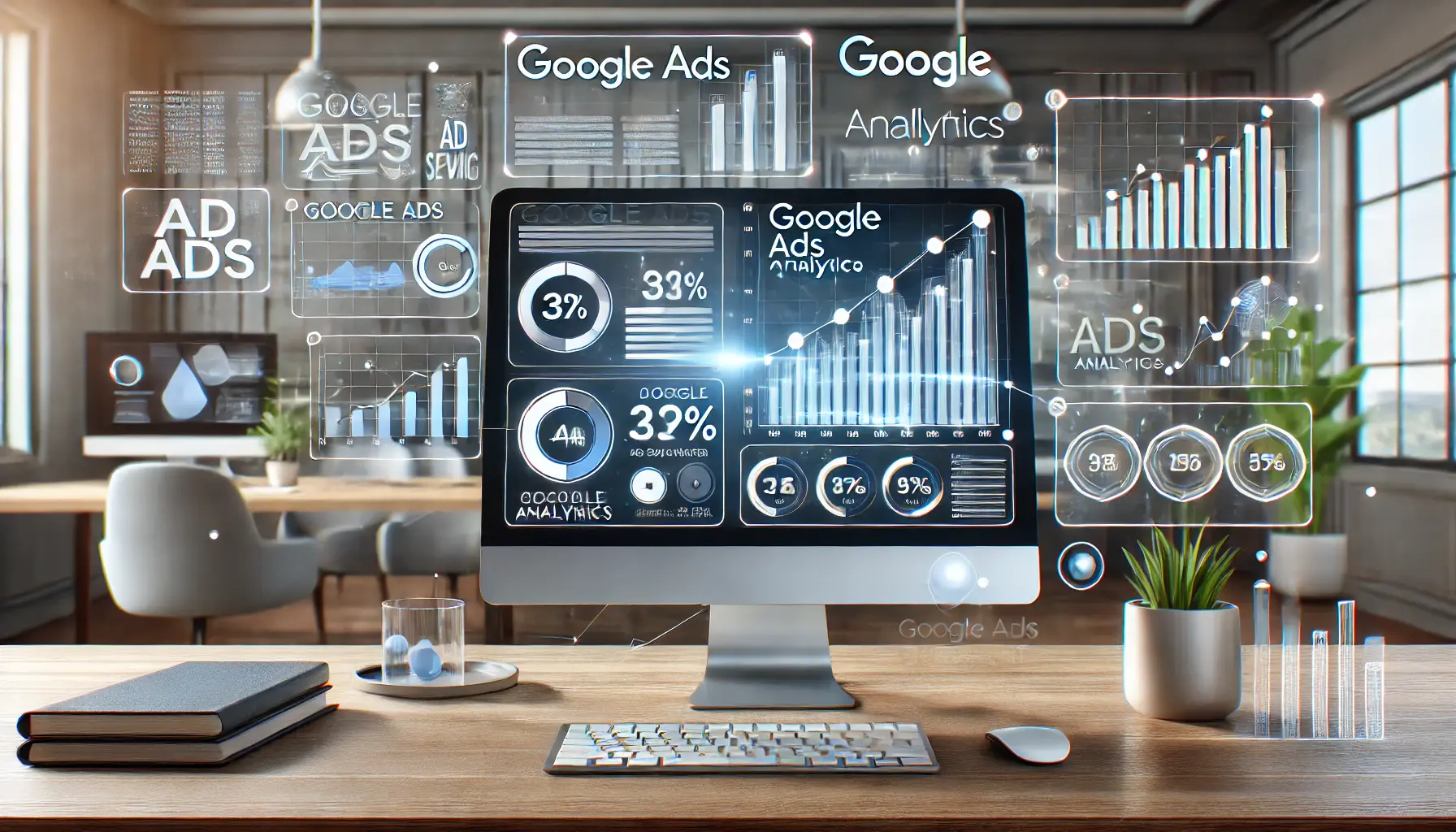
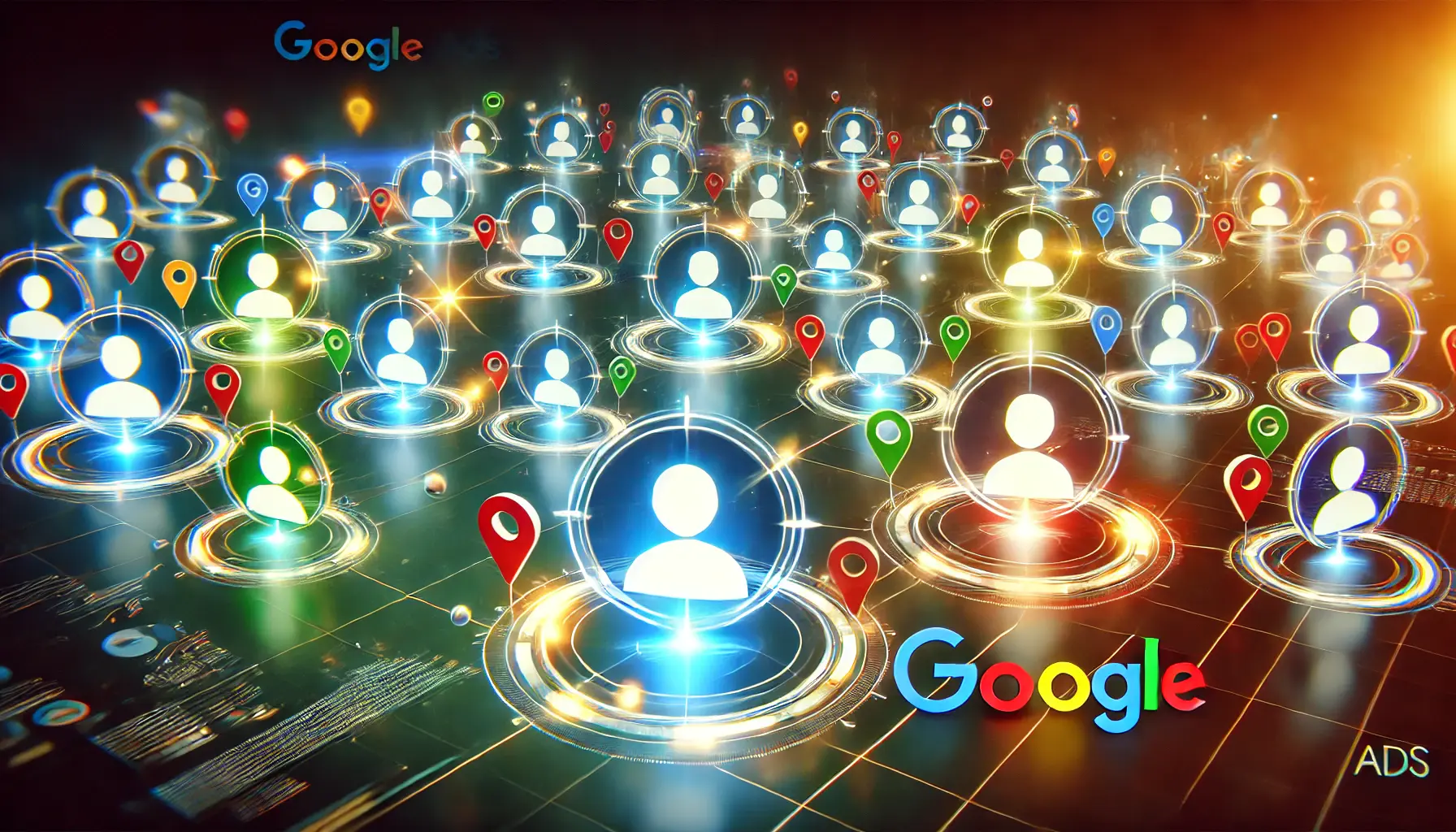

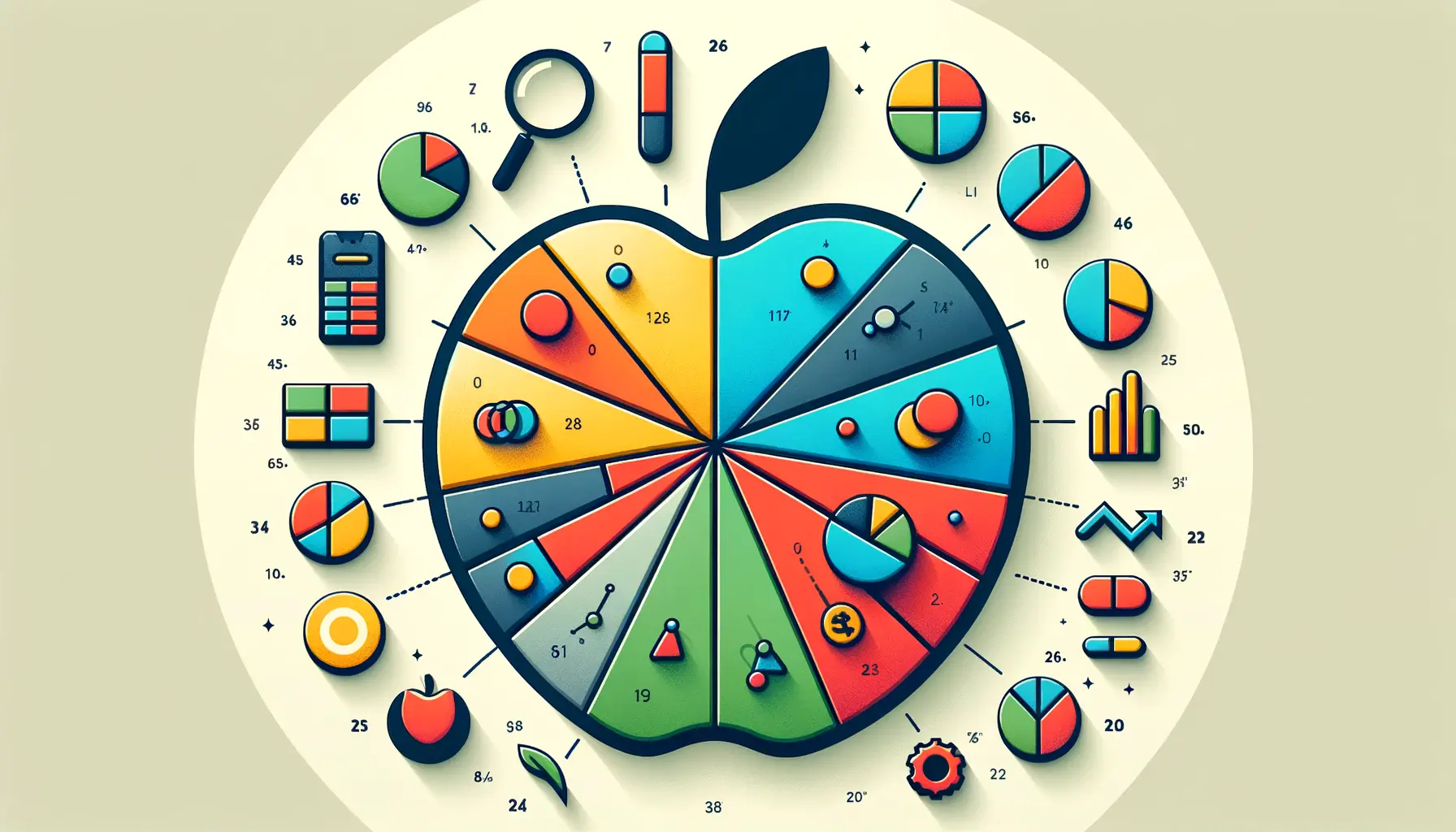
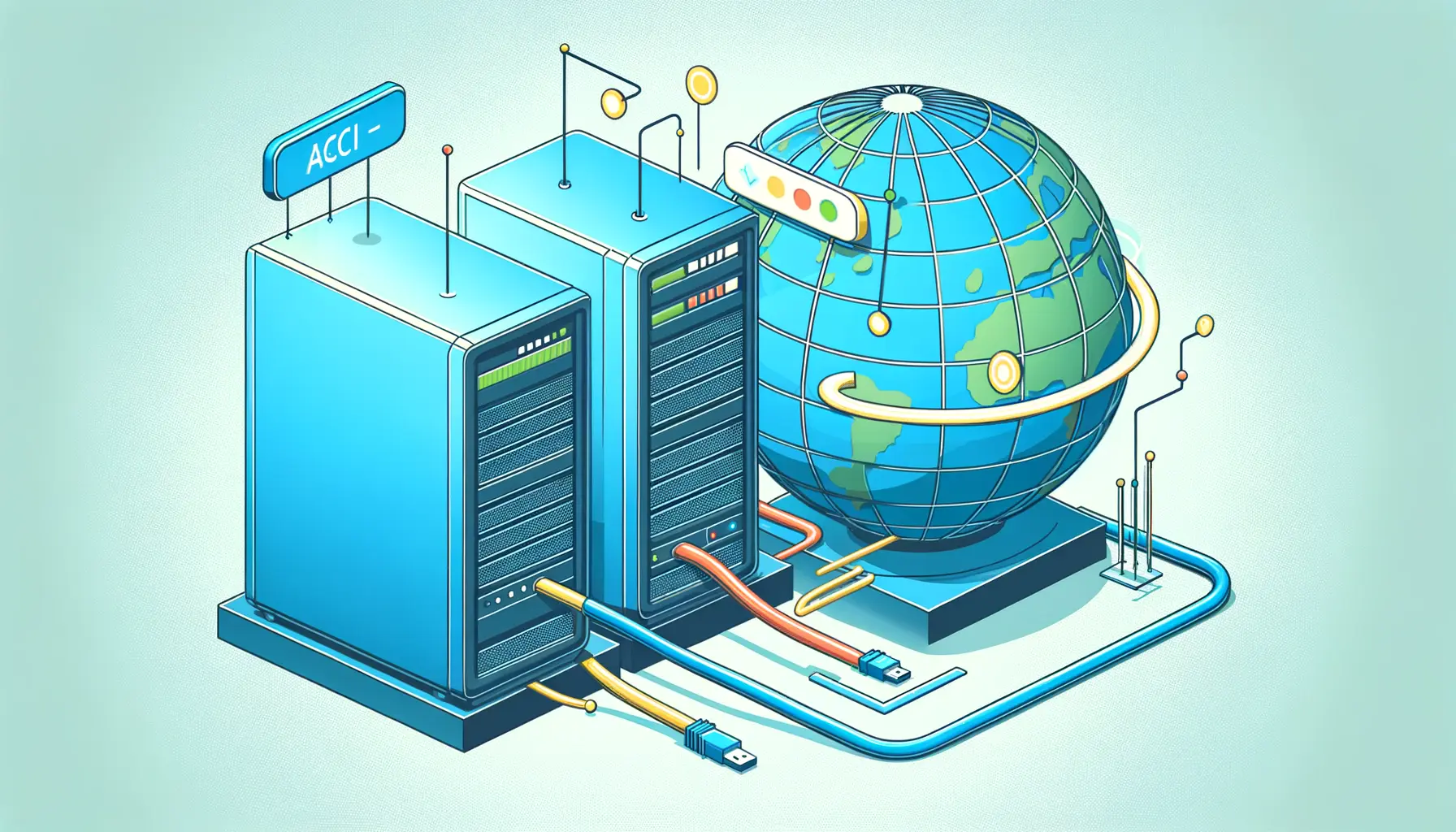

Your writing is a symphony of intellect, with each sentence playing a unique note in the grand composition of your ideas. The harmonious blend of clarity and complexity creates a reading experience that is both symmetrical and avant-garde.